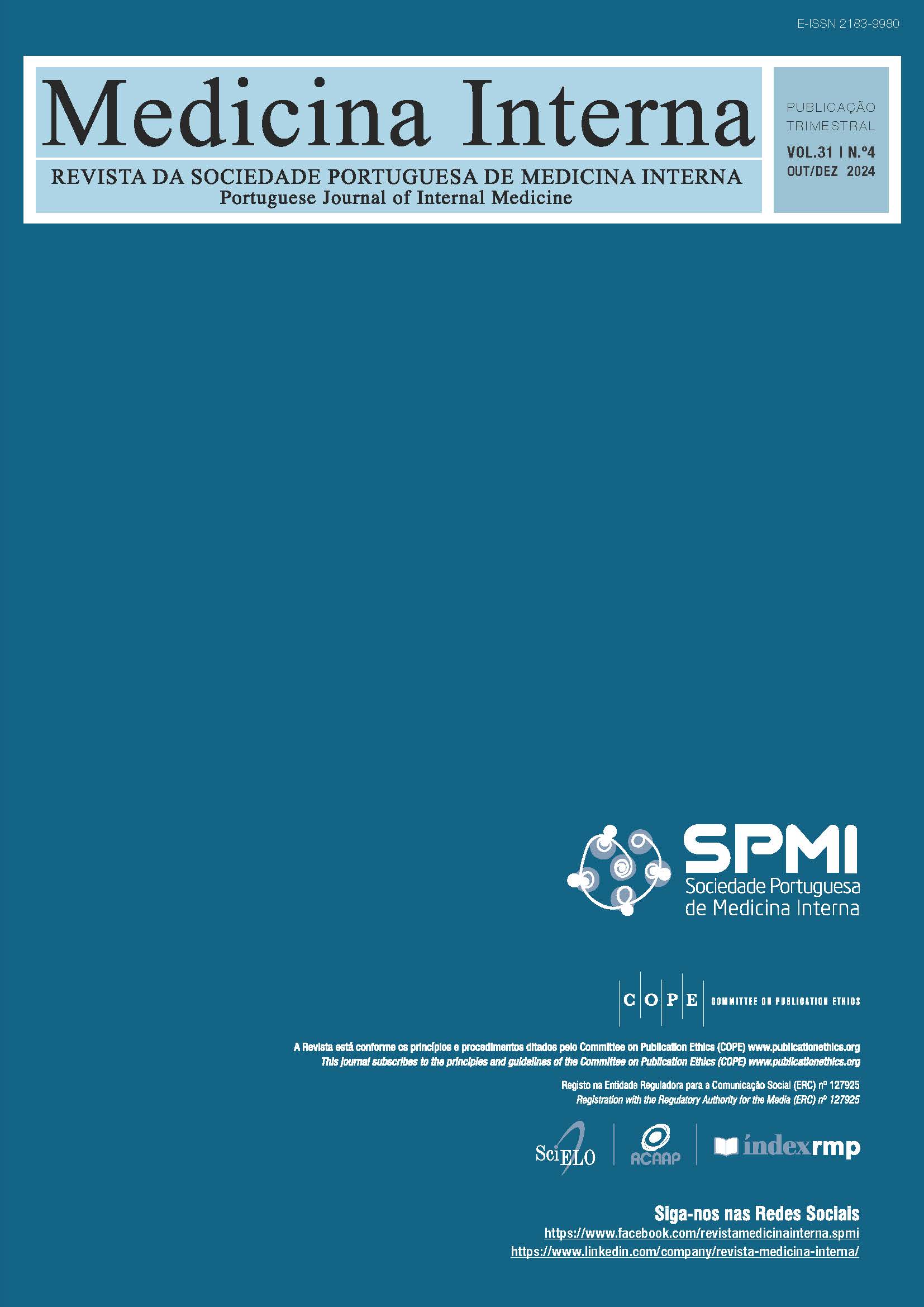Wilson’s Disease - A Family History
Doença de Wilson: A História Familiar
DOI:
https://doi.org/10.24950/rspmi.2491Keywords:
Cobre/metabolismo, Degenerescência Hepatolenticular/diagnóstico, Degenerescência Hepatolenticular/ tratamentoAbstract
A doença de Wilson (WD) é uma doença rara de acumulação de cobre, monogénica e autossómica recessiva. As características clínicas incluem doença hepática, anemia hemolítica, distúrbios neuropsiquiátricos e depósitos de cobre na córnea - anéis de Kayser-Fleischer, uma caraterística da WD. O tratamento é sempre necessário, para evitar a progressão da doença, o que realça a importância de um diagnóstico preciso.
Relatamos os casos de dois irmãos jovens com WD com doença hepática e anéis de Kayser-Fleischer - ambos eram assintomáticos e a história familiar era positiva para doença hepática de etiologia desconhecida. O irmão mais velho apresentava aminotransferases e gama-glutamiltransferase elevadas - o estadiamento da fibrose por elastografia transitória era F4, a ressonância magnética abdominal mostrava esteatose hepática, a ceruloplasmina era indetetável e o cobre urinário de 24 horas estava marcadamente elevado. O diagnóstico de~WD foi confirmado pelos anéis de Kayser-Fleischer. O irmão mais novo também apresentava ALT e GGT elevadas, ceruloplasmina extremamente baixa, cobre urinário de 24 horas elevado e anéis de Kayser-Fleischer. Ambos os doentes começaram tratamento e mantêm seguimento ativo.
Downloads
References
European Association for the Study of the Liver. EASL Clinical Practice Guidelines: Wilson’s disease. J Hepatol. 2012;56:671–85. doi: 10.1016/j.jhep.2011.11.007
Bandmann O, Weiss KH, Kaler SG. Wilson’s disease and other neurological copper disorders. Lancet Neurol. 2015; 14:103–13. doi: 10.1016/S1474-4422(14)70190-5
Ceresara G, Fogagnolo P, Zuin M, Zatelli S, Bovet J, Rossetti L. Study of Corneal Copper Deposits in Wilson’s Disease by in vivo Confocal Microscopy. Ophthalmologica. 2014;231:147–52. doi: 10.1159/000355090
Poujois A, Woimant F. Wilson’s disease: A 2017 update. Clin Res Hepatol Gastroenterol. 2018;42:512–20. doi: 10.1016/j.clinre.2018.03.007
Manolaki N, Nikolopoulou G, Daikos GL, Panagiotakaki E, Tzetis M, Roma E, et al. Wilson disease in children: analysis of 57 cases. J Pediatr Gastroenterol Nutr. 2009;48:72-7. doi: 10.1097/MPG.0b013e31817d80b8.
Lucena-Valera A, Perez-Palacios D, Muñoz-Hernandez R, Romero-Gómez M, Ampuero J. Wilson's disease: Revisiting an old friend. World J Hepatol. 2021;13:634-49. doi: 10.4254/wjh.v13.i6.634.
Schilsky ML, Roberts EA, Bronstein JM, Dhawan A, Hamilton JP, Rivard AM, et al. A multidisciplinary approach to the diagnosis and management of Wilson disease: 2022 Practice Guidance on Wilson disease from the American Association for the Study of Liver Diseases. Hepatology. 2023;77:1428-55.doi: 10.1002/hep.32801.
Mazhar A, Piper MS. Updates on Wilson disease. Clin Liver Dis. 2023;22:117-21. doi: 10.1097/CLD.0000000000000079.
Nehring P, Szeligowska J, Przybyłkowski A. Elastography of the Liver in Wilson's Disease. Diagnostics. 2023;13:1898. doi: 10.3390/diagnostics13111898.
Hefter H, Samadzadeh S. Effective treatment of neurological symptoms with normal doses of botulinum neurotoxin in Wilson's disease: six cases and literature review. Toxins. 2021;13:241. doi: 10.3390/toxins13040241
Downloads
Published
How to Cite
License
Copyright (c) 2024 Internal Medicine

This work is licensed under a Creative Commons Attribution 4.0 International License.
Copyright (c) 2023 Medicina Interna






